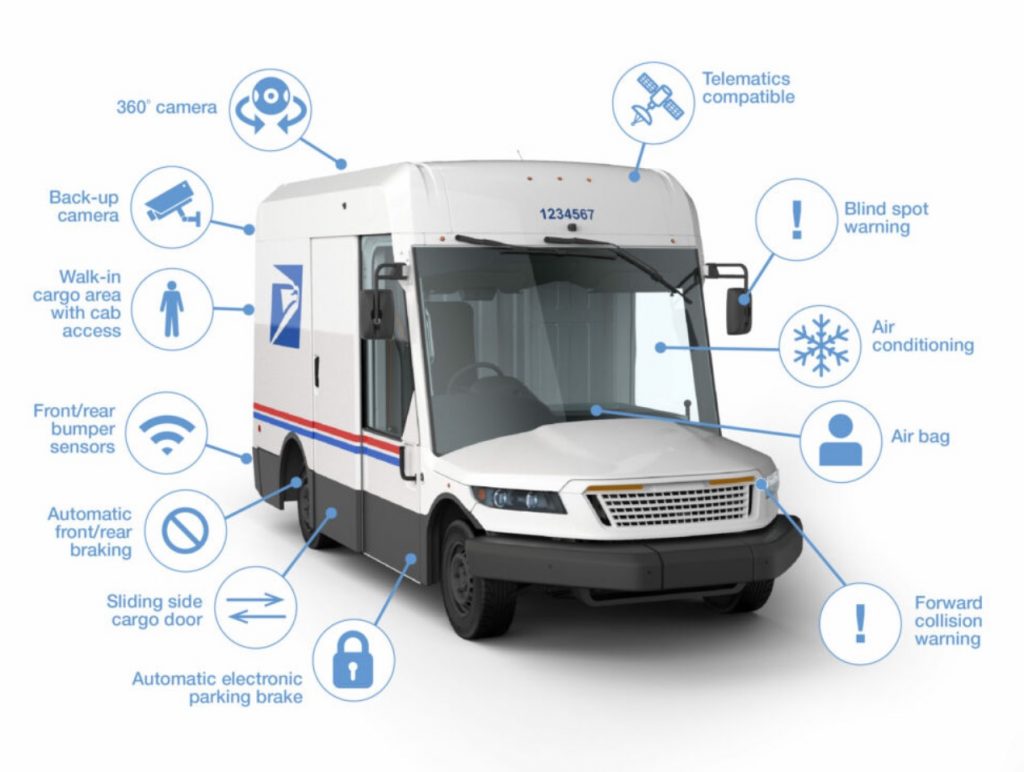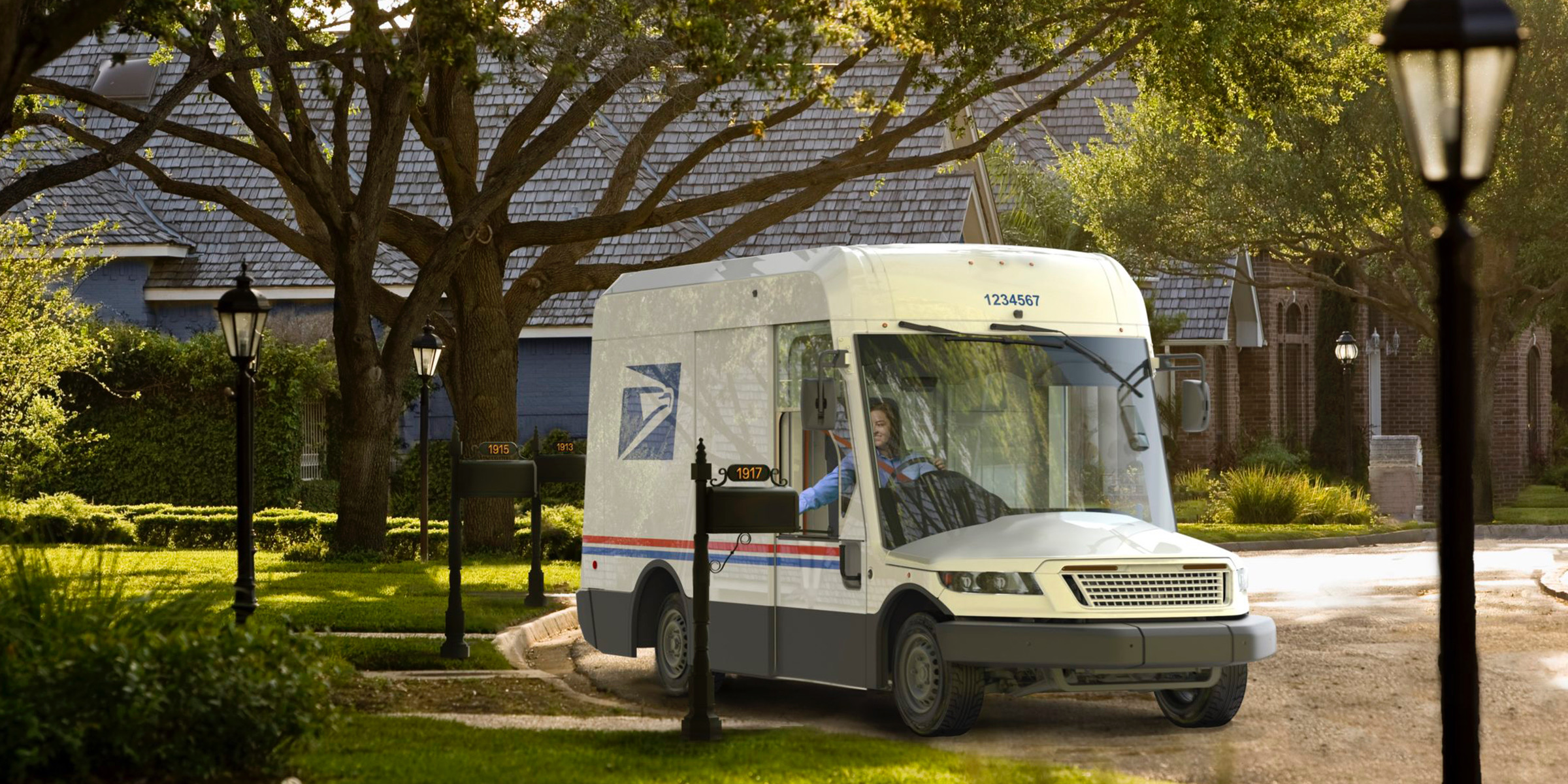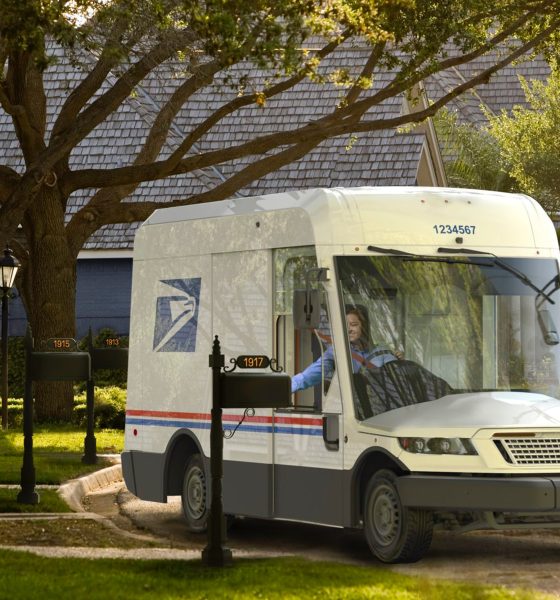On Sunday, February 6, the United States Postal Service (USPS) announced plans to submit an initial order for 5,000 electric delivery vans. The announcement was made to show that the USPS is committed to the fiscally responsible rollout of electric-powered vehicles for America’s largest federal fleet.
The Postal Service also announced plans to achieve 70% fleet electrification within the decade. Postmaster General and USPS Chief Executive Officer Louis DeJoy stated that the Postal Service would be open to increasing its number of electric vehicle orders “should additional funding become available.” The Postmaster tried to elaborate on the USPS’ financial challenges of committing to operating a cleaner Postal vehicle fleet.
“Moreover, comparisons of the Postal Service to private sector multi-national corporations that report yearly profits in the billions of dollars, and that are not required to go to 161 million delivery addresses in all climates and topographies six days per week, are not relevant in view of our perilous financial condition and universal service mission,” DeJoy clarified.
“We will be resolute in making decisions that are grounded in our financial situation and what we can realistically achieve while pushing hard to take delivery of safer, cleaner vehicles by next year. Given our large fiscal deficits and significant financial challenges, Congress is well aware of the additional resources that would be required if Congress would prefer the Postal Service to accelerate the electrification of our delivery vehicle fleet as a matter of public policy,” he explained.
The agency’s recent announcement stated clearly that the Postal Service generally does not receive tax dollars for operating expenses. It relies on postage sales, products, and services to fund its operations.
USPS’ New Delivery Van
On February 23, 2021, the USPS announced a 10-year contract with Oshkosh, WI, to manufacture a new generation of U.S.-built postal delivery vehicles. At the time, the agency stated that the new delivery van from Oshkosh would “drive the most dramatic modernization of the USPS fleet in three decades.”
As per the contract’s initial $482 million investment, Oshkosh was supposed to finalize the production design of the agency’s Next Generation Delivery Vehicle (NGDV). The agreement also stated that Oshkosh would assemble 50,000 to 165,000 NGDVs for the USPS. Last month, the NGDV’s design was showcased during CES 2022 in Las Vegas.

Biden Administration Pushes Back on the NGDV
Last week, members of President Joe Biden’s administration sent letters to the Postal Service, urging the agency to reconsider its plans to buy mostly gas-powered vehicles to upgrade its fleet. The agency’s plans to spend up to $11.3 billion on as many as 165,000 new gas-powered delivery vans in the next decade could have major implications for President Biden’s goal to convert federal cars and trucks to clean energy. The Postal Service fleet makes up a third of the US government’s fleet.
Accoring to the USPS, the NGDV is larger and has a more fuel-efficient internal combustion engine compared to the currently deployed Long Life Vehicle (LLV). The NGDV’s fuel economy is 14.7 MPG when air conditioning isn’t running compared to the LLV’s fuel economy of 8.4 MPG, which does not have an AC system. The new Postal delivery van will be fitted with safety features like 360 degree cameras, front and rear braking, and a driver airbag.
However, the USPS also designed the NGDV to accommodate advancements in technology in its 20-year life. The Postal Service declared that the NGDV has a platform that could be equipped with either an internal combustion engine or battery electric drive train.
The agency stated that its cost estimates—presumably referring to costs related to the NGDV—included the price of charging infrastructure. It plans to charge delivery vans in bulk at USPS facilities. The Postal Service is analyzing state and local electrical grid capacity to determine any potential upgrades it needs to implement at the grid-level.
Below is a letter from the White House to the USPS.
USPS Letter 2022 by Maria Merano on Scribd
The Teslarati team would appreciate hearing from you. If you have any tips, reach out to me at maria@teslarati.com or via Twitter @Writer_01001101.

News
Tesla FSD fleet is nearing 7 billion total miles, including 2.5 billion city miles
As can be seen on Tesla’s official FSD webpage, vehicles equipped with the system have now navigated over 6.99 billion miles.

Tesla’s Full Self-Driving (Supervised) fleet is closing in on almost 7 billion total miles driven, as per data posted by the company on its official FSD webpage.
These figures hint at the massive scale of data fueling Tesla’s rapid FSD improvements, which have been quite notable as of late.
FSD mileage milestones
As can be seen on Tesla’s official FSD webpage, vehicles equipped with the system have now navigated over 6.99 billion miles. Tesla owner and avid FSD tester Whole Mars Catalog also shared a screenshot indicating that from the nearly 7 billion miles traveled by the FSD fleet, more than 2.5 billion miles were driven inside cities.
City miles are particularly valuable for complex urban scenarios like unprotected turns, pedestrian interactions, and traffic lights. This is also the difference-maker for FSD, as only complex solutions, such as Waymo’s self-driving taxis, operate similarly on inner-city streets. And even then, incidents such as the San Francisco blackouts have proven challenging for sensor-rich vehicles like Waymos.
Tesla’s data edge
Tesla has a number of advantages in the autonomous vehicle sector, one of which is the size of its fleet and the number of vehicles training FSD on real-world roads. Tesla’s nearly 7 billion FSD miles then allow the company to roll out updates that make its vehicles behave like they are being driven by experienced drivers, even if they are operating on their own.
So notable are Tesla’s improvements to FSD that NVIDIA Director of Robotics Jim Fan, after experiencing FSD v14, noted that the system is the first AI that passes what he described as a “Physical Turing Test.”
“Despite knowing exactly how robot learning works, I still find it magical watching the steering wheel turn by itself. First it feels surreal, next it becomes routine. Then, like the smartphone, taking it away actively hurts. This is how humanity gets rewired and glued to god-like technologies,” Fan wrote in a post on X.
News
Tesla starts showing how FSD will change lives in Europe
Local officials tested the system on narrow country roads and were impressed by FSD’s smooth, human-like driving, with some calling the service a game-changer for everyday life in areas that are far from urban centers.

Tesla has launched Europe’s first public shuttle service using Full Self-Driving (Supervised) in the rural Eifelkreis Bitburg-Prüm region of Germany, demonstrating how the technology can restore independence and mobility for people who struggle with limited transport options.
Local officials tested the system on narrow country roads and were impressed by FSD’s smooth, human-like driving, with some calling the service a game-changer for everyday life in areas that are far from urban centers.
Officials see real impact on rural residents
Arzfeld Mayor Johannes Kuhl and District Administrator Andreas Kruppert personally tested the Tesla shuttle service. This allowed them to see just how well FSD navigated winding lanes and rural roads confidently. Kruppert said, “Autonomous driving sounds like science fiction to many, but we simply see here that it works totally well in rural regions too.” Kuhl, for his part, also noted that FSD “feels like a very experienced driver.”
The pilot complements the area’s “Citizen Bus” program, which provides on-demand rides for elderly residents who can no longer drive themselves. Tesla Europe shared a video of a demonstration of the service, highlighting how FSD gives people their freedom back, even in places where public transport is not as prevalent.
What the Ministry for Economic Affairs and Transport says
Rhineland-Palatinate’s Minister Daniela Schmitt supported the project, praising the collaboration that made this “first of its kind in Europe” possible. As per the ministry, the rural rollout for the service shows FSD’s potential beyond major cities, and it delivers tangible benefits like grocery runs, doctor visits, and social connections for isolated residents.
“Reliable and flexible mobility is especially vital in rural areas. With the launch of a shuttle service using self-driving vehicles (FSD supervised) by Tesla in the Eifelkreis Bitburg-Prüm, an innovative pilot project is now getting underway that complements local community bus services. It is the first project of its kind in Europe.
“The result is a real gain for rural mobility: greater accessibility, more flexibility and tangible benefits for everyday life. A strong signal for innovation, cooperation and future-oriented mobility beyond urban centers,” the ministry wrote in a LinkedIn post.
News
Tesla China quietly posts Robotaxi-related job listing
Tesla China is currently seeking a Low Voltage Electrical Engineer to work on circuit board design for the company’s autonomous vehicles.

Tesla has posted a new job listing in Shanghai explicitly tied to its Robotaxi program, fueling speculation that the company is preparing to launch its dedicated autonomous ride-hailing service in China.
As noted in the listing, Tesla China is currently seeking a Low Voltage Electrical Engineer to work on circuit board design for the company’s autonomous vehicles.
Robotaxi-specific role
The listing, which was shared on social media platform X by industry watcher @tslaming, suggested that Tesla China is looking to fill the role urgently. The job listing itself specifically mentions that the person hired for the role will be working on the Low Voltage Hardware team, which would design the circuit boards that would serve as the nervous system of the Robotaxi.
Key tasks for the role, as indicated in the job listing, include collaboration with PCB layout, firmware, mechanical, program management, and validation teams, among other responsibilities. The role is based in Shanghai.
China Robotaxi launch
China represents a massive potential market for robotaxis, with its dense urban centers and supportive policies in select cities. Tesla has limited permission to roll out FSD in the country, though despite this, its vehicles have been hailed as among the best in the market when it comes to autonomous features. So far, at least, it appears that China supports Tesla’s FSD and Robotaxi rollout.
This was hinted at in November, when Tesla brought the Cybercab to the 8th China International Import Expo (CIIE) in Shanghai, marking the first time that the autonomous two-seater was brought to the Asia-Pacific region. The vehicle, despite not having a release date in China, received a significant amount of interest among the event’s attendees.










